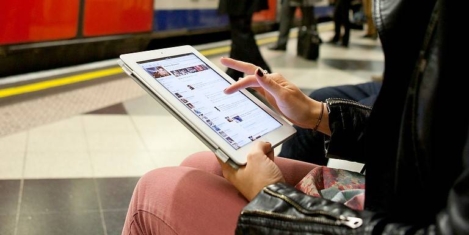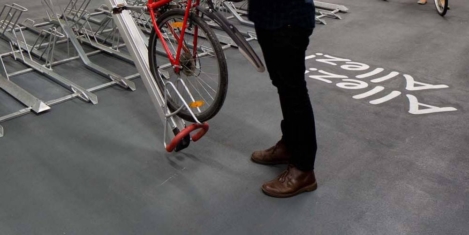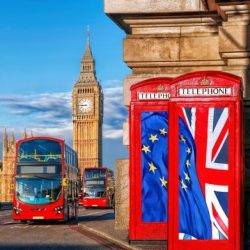August 21, 2017
Office sector undergoing transformational structural disruption in response to changing supply and demand
 Amid varying economic performances and property fundamentals, North American and European office leasing markets are generally performing well as they undergo an important shift in dynamics influenced by trends transforming both occupier demand and the supply of new product. Traditional drivers of demand are being joined by emerging disruptors that will increasingly shape the future of the office-space market and commercial real estate as a whole. These are some of the key trends noted in Avison Young’s Mid-Year 2017 North America and Europe Office Market Report. According to the report, of the 64 office markets tracked in North America and Europe, which comprise almost 6 billion square feet, market-wide vacancy rates decreased in 40 of the markets as nearly 52 million square feet was absorbed. Occupiers’ desire for new products remains strong and developers have responded, according to the report, with more than 62 million sq. ft. of office space was completed during the 12-month period ending June 30, 2017.
Amid varying economic performances and property fundamentals, North American and European office leasing markets are generally performing well as they undergo an important shift in dynamics influenced by trends transforming both occupier demand and the supply of new product. Traditional drivers of demand are being joined by emerging disruptors that will increasingly shape the future of the office-space market and commercial real estate as a whole. These are some of the key trends noted in Avison Young’s Mid-Year 2017 North America and Europe Office Market Report. According to the report, of the 64 office markets tracked in North America and Europe, which comprise almost 6 billion square feet, market-wide vacancy rates decreased in 40 of the markets as nearly 52 million square feet was absorbed. Occupiers’ desire for new products remains strong and developers have responded, according to the report, with more than 62 million sq. ft. of office space was completed during the 12-month period ending June 30, 2017.














 Commercial property occupiers remain cautious about the future, and hard data indicates that demand has, so far, been largely unaffected by Brexit, claims a new report from the British Council for Offices (BCO) . ‘Brexit and its Potential Impact on Office Demand’, examines how Brexit might impact on demand for office space on a national and regional basis through to 2022. According to the report, almost one year on from the Brexit vote the situation is one of uncertainty, feeding through to slower growth, with ‘an almost palpable sense that choppy waters lie ahead, particularly with regard to trade and movement of labour’. However, businesses continue to make long-term investments in the national economy and even in the City, some large investment banks have committed to large new office buildings. There is much variation in the relative performance of the UK’s major office centres, though, with some expanding and others apparently in decline.
Commercial property occupiers remain cautious about the future, and hard data indicates that demand has, so far, been largely unaffected by Brexit, claims a new report from the British Council for Offices (BCO) . ‘Brexit and its Potential Impact on Office Demand’, examines how Brexit might impact on demand for office space on a national and regional basis through to 2022. According to the report, almost one year on from the Brexit vote the situation is one of uncertainty, feeding through to slower growth, with ‘an almost palpable sense that choppy waters lie ahead, particularly with regard to trade and movement of labour’. However, businesses continue to make long-term investments in the national economy and even in the City, some large investment banks have committed to large new office buildings. There is much variation in the relative performance of the UK’s major office centres, though, with some expanding and others apparently in decline.






 A new survey claims that UK workers waste on average five days of annual leave each year with one in six having more than a full working week of holiday leftover in 2016. The new study, commissioned by Airtours, has found that 40 percent of workers did not use up their full holiday allowances, and those who did spent less than half of their time off relaxing. Of the reasons given for not taking their allocated leave, 25 percent of people asked said they didn’t need to take it or even want to, 36 percent had too much on at work to take time off, and 26 percent weren’t allowed to take holiday as it meant being off at the same time as colleagues. When people did take a break last year, the research suggests that most of the time people weren’t using their holiday how they should have been by recharging their batteries. On average people spent seven holiday days at home and 56 percent admitted to doing boring chores instead of getting out and enjoying themselves. A further 32 percent used their holiday to go to medical appointments and 17 percent used it to deal with those unexpected family emergencies, like illness or injury or taking the dog to the vet.
A new survey claims that UK workers waste on average five days of annual leave each year with one in six having more than a full working week of holiday leftover in 2016. The new study, commissioned by Airtours, has found that 40 percent of workers did not use up their full holiday allowances, and those who did spent less than half of their time off relaxing. Of the reasons given for not taking their allocated leave, 25 percent of people asked said they didn’t need to take it or even want to, 36 percent had too much on at work to take time off, and 26 percent weren’t allowed to take holiday as it meant being off at the same time as colleagues. When people did take a break last year, the research suggests that most of the time people weren’t using their holiday how they should have been by recharging their batteries. On average people spent seven holiday days at home and 56 percent admitted to doing boring chores instead of getting out and enjoying themselves. A further 32 percent used their holiday to go to medical appointments and 17 percent used it to deal with those unexpected family emergencies, like illness or injury or taking the dog to the vet. 










August 23, 2017
I’ve got some real estate here in my bag
by Paul Carder • Comment, Flexible working, Property, Technology
We’ll marry our fortunes together.
I’ve got some real estate
Here in my bag.
So we bought a pack of cigarettes,
And Mrs. Wagner’s pies,
And walked off
To look for America.
“Kathy”, I said,
As we boarded a Greyhound in Pittsburgh,
Michigan seems like a dream to me now.
(more…)